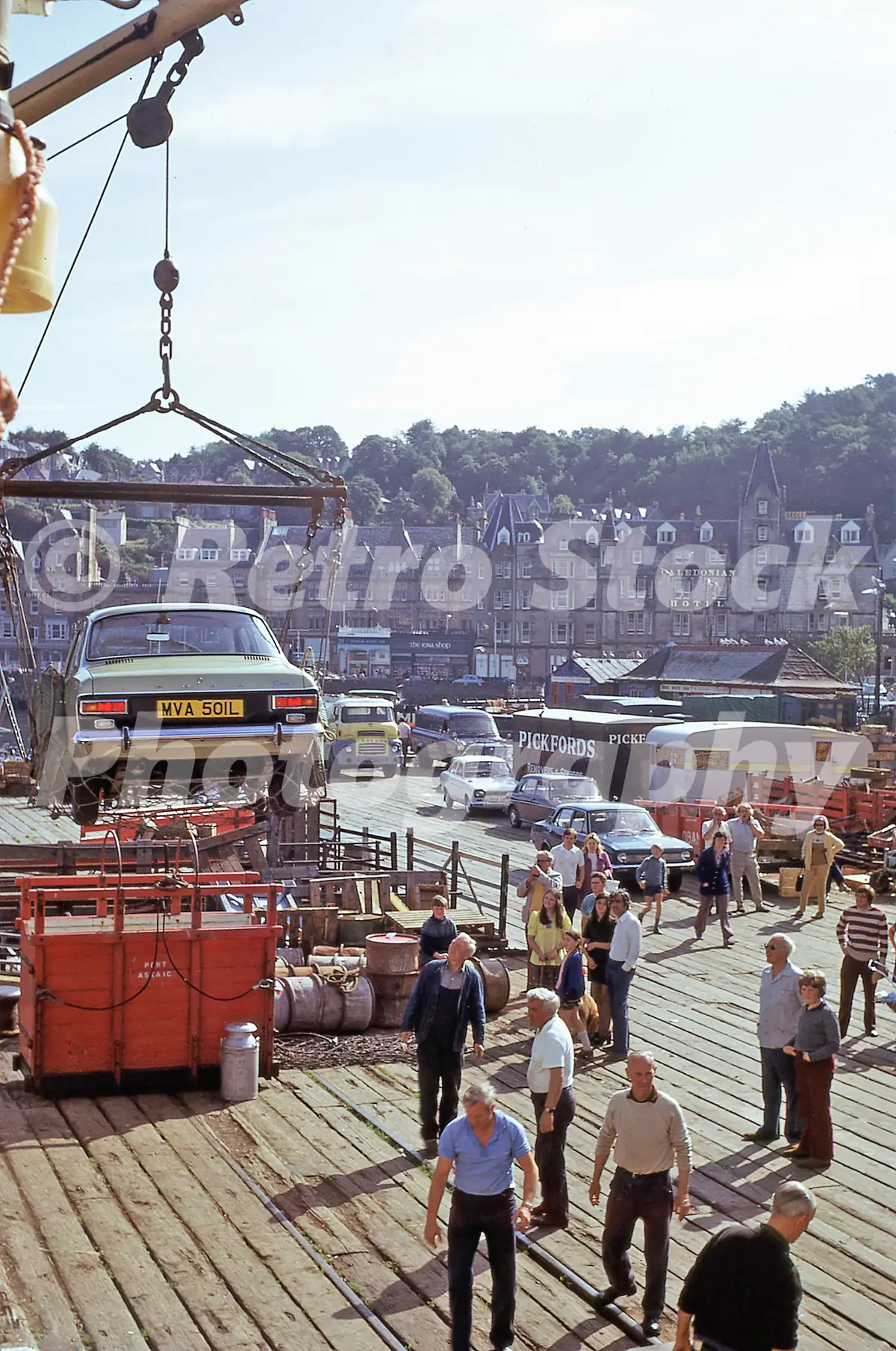Before roll-on, roll-off ferries became standard, transporting cars across Scotland’s lochs and sounds was a more precarious affair—often involving a crane.
Up until the 1950s and even into the 1970s on some routes, cars were hoisted aboard ferries by sling and crane, a process that was slow, risky, and highly dependent on calm weather. Vehicles would be driven onto a quay or slipway, where staff carefully rigged slings around the chassis. The car was then lifted—sometimes swaying in the sea breeze—and gently lowered onto the deck of the ferry. On arrival, the entire procedure was repeated in reverse.
This method was used on routes such as Kyle of Lochalsh to Skye, Ballachulish, and various Clyde crossings, particularly where slipways or ramps hadn’t yet been built or adapted for vehicle access.
As car ownership rose and ferry demand increased, this awkward system was gradually replaced by drive-on/drive-off vessels with vehicle ramps. But the image of a car dangling mid-air over Scottish waters remains a striking reminder of the ingenuity—and challenges—of early motoring in the Highlands and islands.






Reviews
There are no reviews yet.